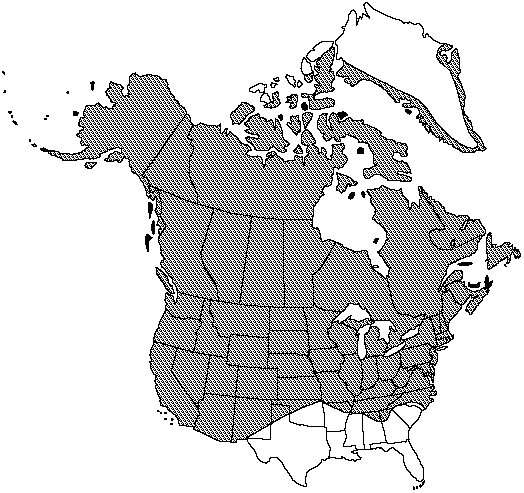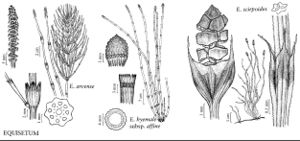Difference between revisions of "Equisetum arvense"
Sp. Pl. 2: 1061. 1753.
RevisionBot (talk | contribs) m (Bot: Adding category Revision Pending) |
imported>Volume Importer |
||
| Line 51: | Line 51: | ||
|publication year=1753 | |publication year=1753 | ||
|special status=Illustrated | |special status=Illustrated | ||
| − | |source xml=https:// | + | |source xml=https://bitbucket.org/aafc-mbb/fna-data-curation/src/2e0870ddd59836b60bcf96646a41e87ea5a5943a/coarse_grained_fna_xml/V2/V2_772.xml |
|genus=Equisetum | |genus=Equisetum | ||
|subgenus=Equisetum subg. Hippochaete | |subgenus=Equisetum subg. Hippochaete | ||
| Line 57: | Line 57: | ||
}}<!-- | }}<!-- | ||
| − | --> | + | -->[[Category:Treatment]][[Category:Equisetum subg. Hippochaete]] |
| − | |||
| − | [[Category:Treatment]] | ||
| − | [[Category:Equisetum subg. Hippochaete | ||
| − | |||
| − | |||
Revision as of 20:25, 5 November 2020
Aerial stems dimorphic; vegetative stems green, branched, 2–60(–100) cm; hollow center 1/3–2/3 stem diam. Sheaths squarish in face view, 2–5(–10) × 2–5(–9) mm; teeth dark, 4–14, narrow, 1–3.5 mm, often cohering in pairs. Branches in regular whorls, ascending, solid; ridges 3–4; valleys channeled; 1st internode of each branch longer than subtending stem sheath; sheath teeth attenuate. Fertile stems brown, lacking stomates, unbranched, shorter than vegetative stems, with larger sheaths, fleshy, ephemeral. 2n =ca. 216.
Phenology: Cones maturing in early spring.
Habitat: Roadsides, riverbanks, fields, marshes, pastures, tundra
Elevation: 0–3200 m
Distribution

Greenland, St. Pierre and Miquelon, Alta., B.C., Man., N.B., Nfld. and Labr. (Nfld.), N.W.T., N.S., Ont., P.E.I., Que., Sask., Yukon, Ala., Alaska, Ariz., Ark., Calif., Colo., Conn., Del., D.C., Ga., Idaho, Ill., Ind., Iowa, Kans., Ky., Maine, Md., Mass., Mich., Minn., Mo., Mont., Nebr., Nev., N.H., N.J., N.Mex., N.Y., N.C., N.Dak., Ohio, Okla., Oreg., Pa., R.I., S.Dak., Tenn., Tex., Utah, Vt., Va., Wash., W.Va., Wis., Wyo, Eurasia s to Himalayas, c China, Korea, Japan.
Discussion
Among the many infraspecific taxa that have been named in this species, Equisetum arvense var. boreale Bongard has been most generally accepted and has been applied to plants with tall, erect stems with 3-ridged branches. Because both 3-ridged and 4-ridged branches may occur on a single stem, the variety boreale is not recognized here as distinct (R.L. Hauke 1966).
Selected References
None.
